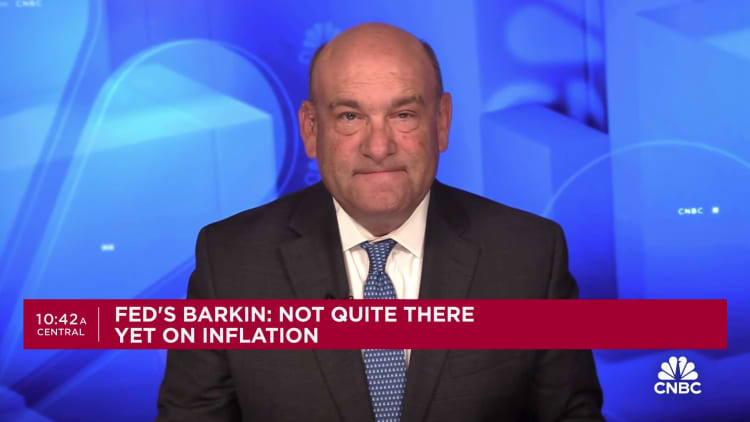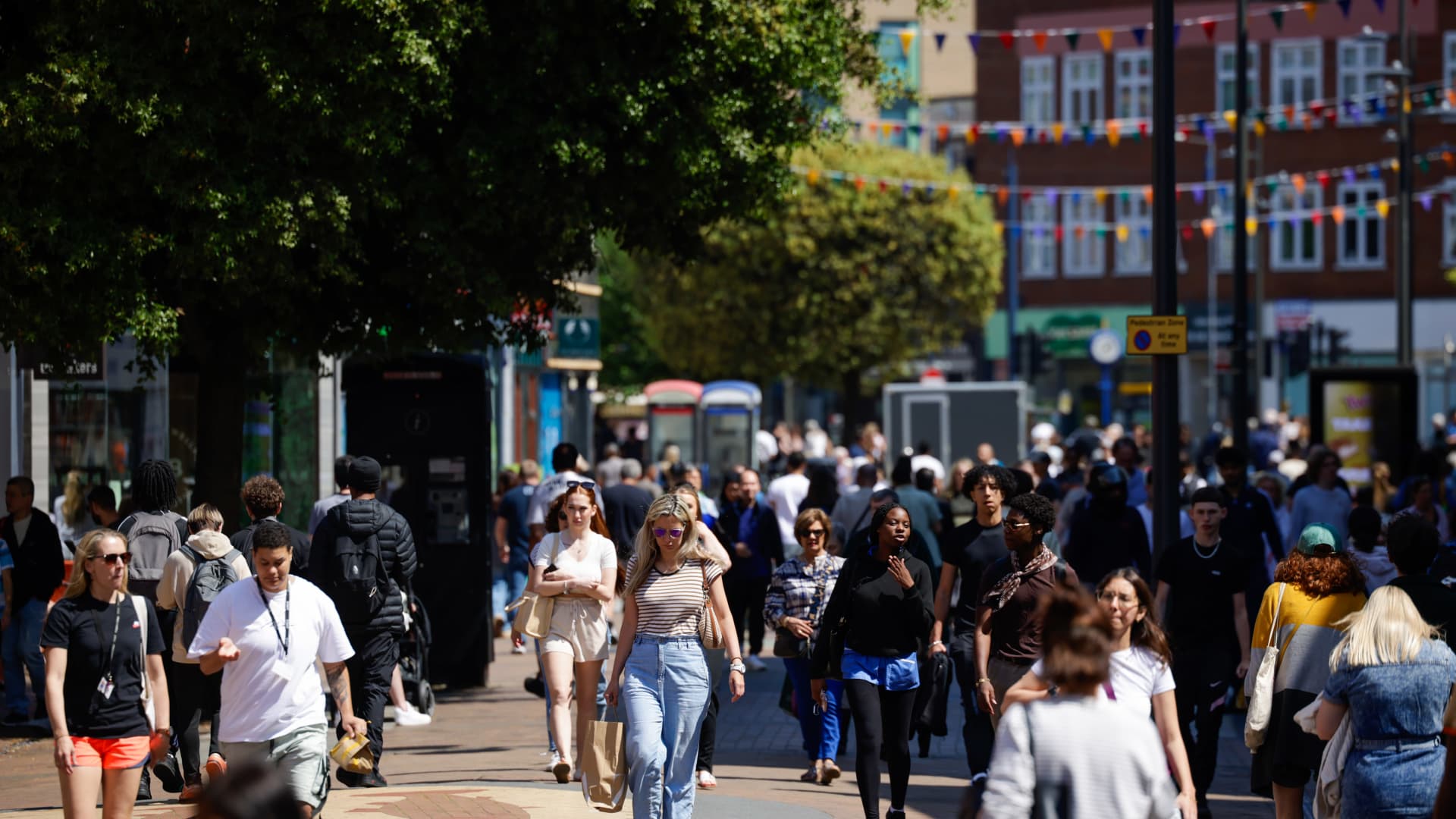It is a truly vast amount of anticipated wealth creation. And as I found on my recent trip to Delhi, it is driving a discretionary spending boom that I believe is already clear for anyone on the ground to see. Two decades of change The scale of India’s shift towards premium products was evident as soon as I stepped off the plane. On my way to my hotel, I saw a plethora of EVs and SUVs filling the roads as queues of shoppers lined up outside designer stores like Chanel, Gucci, and Louis Vuitton. Carmignac’s Amol Gogate: Why a Modi election win could further propel India’s marke…
European watchdogs call for overhaul of sustainable labels in SFDR review
The European Banking Authority (EBA), European Insurance and Occupational Pensions Authority (EIOPA) and European Securities and Markets Authority (ESMA) have argued for a sustainable investment system to “help consumers navigate the broad selection of sustainable products” and support the full transition to sustainable finance. FIF 2024: Half of Article 8 funds target less than 10% of sustainable investments In a joint opinion document published on Tuesday (18 June), the three ESAs urged the European Commission to consider the introduction of investment categories with “clear objecti…
Fitch pushes back China rate cut expectations to next year as Fed holds interest rates steady
Ratings agency Fitch no longer expects China to cut its policy rate this year, instead delaying such a reduction to next year as the U.S. Federal Reserve keeps its interest rates high. Fitch now forecasts China will keep its one-year medium-term lending facility (MLF) unchanged this year at 2.5%, and cut it to 2.25% next year. In March, the ratings agency had forecast one cut for 2024. People walk past the headquarters of the People’s Bank of China (PBOC), the central bank, in Beijing, China September 28, 2018. Jason Lee | Reuters
BEIJING — Ratings agency Fitch no longer expects China to cut its policy rate this year, and has pushed back its expectations for a reduction to next year as the U.S. Federal Reserve keeps its interest rates high.
Fitch now forecasts China will keep its one-year medium-term lending facility (MLF) unchanged this year at 2.5%, and cut it to 2.25% next year. In March, the ratings agency had forecast one cut for 2024.
“There are a couple of factors behind this. First on the external side, concerns around the exchange rate against the U.S. dollar, because of changing expectations for the Fed, restrain the [People’s Bank of China],” Jeremy Zook, Fitch Ratings’ head of sovereign rating in Asia Pacific, said during a presentation Wednesday.
Next year, “as the Fed begins to cut policy rates we think that should give a bit more space for the PBOC to maneuver,” he said. Zook expects Beijing to make greater use of fiscal policy this year.
The Fed last week held steady on its key interest rate and indicated just one cut by the end of the year. That contrasts with investor expectations heading into 2024 that the Fed would soon ease monetary policy after aggressively hiking rates.
Tighter Fed policy has kept the U.S. dollar strong against the Chinese yuan, which is close to re-touching lows last seen in 2008, according to Wind Information data. A weaker Chinese currency increases the pressure of capital outflows.
“Also there do seem to be concerns around bank net interest margins being quite low, and this also poses challenges for the PBOC,” Zook said. Net interest margin (NIM) is a measure of bank profitability as it calculates the difference
CNBC
US Stocks Beat Predictions Over the Past Decade. Can They Do it Again?
Ten years ago, there were three schools of thought about how American stocks would fare during the next decade.
The mainstream belief, widely held by everyday investors, was that US equities would gain an average of 10-12% per year. After all, that was their long-term annualised rate of return, according to the popularly cited data from Ibbotson Associates, which dated to 1926. Why doubt the track record?
Most investment experts thought differently. Those were the recorded numbers, all right, but conditions had changed. By historical standards, the yield on stocks was low, their prices were high, and the nation’s gross domestic product growth was sluggish. Best to shave that annual estimate to 7%-8%. Warren Buffett believed that, as did Jack Bogle, as did Wharton’s Jeremy Siegel.
The third group was the pessimists. Largely guided by statistics such as the Shiller CAPE ratio, they argued that US equity valuations had already crossed that line. Yes, stocks had briefly become cheap after the 2008 global financial crisis, but by 2014 they had fully recovered. Stocks were due for a comeuppance.
Schiller CAPE Ratio
Robert Schiller Data as of June 16 2024
Only twice in the previous half-century had the CAPE ratio been higher than in spring 2014: during the late 1990s and the mid-2000s. As with bars at 2am, nothing good happened after either of those occasions. Perhaps equities would not crash this time around, but they surely wouldn’t thrive. At best, they would eke out a humble nominal annualized gain, say, 2%-3%.
The Results
To the surprise of the experts and the utter dismay of the pessimists, US equities ignored the concerns and proceeded on their merry way. The chart below shows the annualized total return for the S&P 500 from June 2014 through May 2024, along with the outlooks from the forecasting schools.
Total Returns
Morningstar Direct Data as of June 16
Even better than before! That said, the picture is incomplete because it considers only nominal returns. What matters, of course, is after-inflation performance. To what extent did owning a US equity portfolio increase a shareholder’s purchasing power? I redid the exercise using a 2.25% expected inflation rate for the forecasters. (That was not only a common prediction, but also the prevailing breakeven inflation rate on 10-year Treasury Inflation-Protected Securities.)
Real Returns
Source: Morningstar Direct, author’s calaculations, data as of June 16 2024
Incorporating inflation slightly shrinks the victory margin because
Hargreaves Lansdown backs £5.4bn private equity takeover
The board of Hargreaves Lansdown, the UK’s largest investment platform, has said it is willing to “unanimously recommend” a £5.4bn takeover offer from a consortium of private equity firms led by CVC Capital Partners, according to a report by the Financial Times.
In a press statement, Hargreaves Lansdown confirmed it has requested an extension for the private equity firms to formalise their offer beyond the original deadline set for Wednesday, in accordance with UK takeover regulations. The company emphasised that the new bid is one the board is prepared to endorse to its shareholders.
This offer values the company at £11.40 per share and is 15% higher than the 985p per share offer made in April, which was dismissed by Hargreaves Lansdown’s board as significantly undervaluing the company.
According to Citi, a successful deal would allow shareholders to stay invested in the unlisted vehicle, potentially enabling the founders, who collectively own 26% of the company, to retain their stakes.
The consortium, which includes Nordic Capital and Platinum Ivy (a subsidiary of the Abu Dhabi Investment Authority), has until 19 July to finalise their bid and outline their plans for Hargreaves Lansdown.
Co-founder and largest shareholder Peter Hargreaves told the FT that it was “a disgrace” and described his namesake as “one of the best-run companies in the UK 10 years ago”. Co-founder Stephen Lansdown, who holds a 6% stake, meanwhile said separately that price was “not the main consideration”, instead emphasising the private equity firms’ plans for the business.
The takeover offer comes as Hargreaves Lansdown faces a slowdown in customer inflows, coupled with rising costs under previous management — last year, the company appointed Alison Platt as chair and Dan Olley as chief executive, replacing Deanna Oppenheimer and Chris Hill respectively. Its shares have plummeted from a high of £24 in 2019 to a low of £7 earlier this year.
Hargreaves Lansdown is based in Bristol and manages £150bn in customer assets.
Vivriti AM launches $240m private credit fund for Indian SMEs
Vivriti Asset Management will launch a new private credit fund aimed at investing in small and medium-sized enterprises in India, according to a report by Bloomberg.
In a joint interview with Bloomberg and The Hindu Business Line, Vineet Sukumar, founder and managing director of Vivriti, said that the Chennai-based private credit firm plans to raise up to INR20bn ($240m) for its Diversified Bond Fund Series II, its third such vehicle. The fund will have a five-year tenor and aims to deliver a pretax annual rupee return of 15% to 16%.
“We will primarily focus our financing on profitable operating companies where cash flows can be predicted,” Sukumar stated. The fund will emphasise direct lending to businesses rather than relying on events like IPOs or refinancing for repayments, he added.
According to Soumendra Ghosh, Vivriti’s CIO, the new fund will target consumer goods, healthcare, infrastructure and manufacturing. The fund plans to make 30 to 35 investments, with a cap of INR1bn per issuer to mitigate credit risks.
Vivriti, established over five years ago, saw its first private credit fund launched in 2019 mature with a yield of over 15.5% for investors.
Time to Break Down Closed Doors
Tesla is under pressure from investors, as former employees strain against arbitration ties.
Multi-billionaire Elon Musk has never been one to shy away from the spotlight. In recent weeks, he dominated headlines again as shareholders in his US-based automotive and clean energy company Tesla gathered for its annual general meeting (AGM) on 13 June to vote on the CEO’s proposed historic US$56…
Subscribe
Subscribe to ESG Investor to gain access to the leading platform for news, analysis, and interviews across sustainable investing. Select subscribe below to view our subscription packages or you can email us at subscriptions@esginvestor.net to discuss your options.
Request a Trial
Get in touch today to discuss a trial giving you unrestricted and unlimited access to ESG Investor for you and/or your team(s) for a limited period. Email us at subscriptions@esginvestor.net
Recommended for you
UK inflation falls to Bank of England’s 2% target ahead of elections
U.K. inflation fell to the Bank of England’s target of 2.0% in May, the Office for National Statistics said Wednesday. The headline reading declined from 2.3% in April, bringing it in line with the central bank’s 2% target. The print is the last key economic measure ahead of national elections in July. Shoppers on the high street in the Kingston district of London, U.K. Bloomberg | Bloomberg | Getty Images
U.K. inflation fell to the Bank of England’s target of 2.0% in May, the Office for National Statistics said Wednesday, in the last print of the key economic measure ahead of national elections in July.
The headline reading declined from 2.3% in April and came in line with the 2% expectations of economists polled by Reuters.
Sterling rose slightly shortly after the release, trading at $1.2721 by 7:33 a.m. London time.
Services inflation — which is closely watched by the BOE given its dominance within the U.K. economy and its reflection of domestically-generated price rises — was at 5.7% in May, versus 5.9% during the previous month.
Core inflation, excluding energy, food, alcohol and tobacco, dipped to 3.5% from 3.9% in April.
Falling food prices were the largest contributor to the declines, while car fuel costs continued to see an upward pressure, the ONS said.
Unseasonably bad weather led to the slowest increase in grocery sales in two years, new figures from U.K. market research firm Kantar showed Tuesday. Grocery sales rose 1.0% in the four weeks to June 9, marking the sixteenth consecutive monthly decline in food inflation, according to the index.
Bank of England decision in focus
While the latest print brings inflation in line with the BOE’s target, Azad Zangana, senior European economist and strategist at Schroders, cautioned that upward pressure could return in the second half of the year, as the U.K. phases out its energy price cap.
“From the third, fourth quarter onwards, you might start to see a bit more upward pressure coming through as the Bank of England has warned,” he told CNBC’s “Squawk Box.”
Zangana suggested that the Bank could even “surprise” the market with a rate cut this week, when it next meets on Thursday. The Bank is otherwise widely expected to hold rates steady at 5.25%, where they have been since August 2023 — back
CNBC
UK inflation returns to 2% target but June BoE cut remains unlikely
The drop was widely expected, with the BoE’s spring forecast predicting a return to target in 2024. Food prices were the largest contributors to the reduction in the headline figure, the ONS found, while the largest increase came from motor fuels. At the same time, core CPI rose by 3.5% in the year to May, compared with 3.9% in April. The three-year long wait for inflation to fall back to target is a “milestone moment”, said James McManus, CIO at Nutmeg, with energy prices a “significant driver” in bringing down the headline figure. UK grocery inflation drops to lowest rate sinc…
Partner Insight: In defence of a bit of active management in your portfolio!
The aim for every multi-asset strategy is to add value right? Nobody builds an investment strategy with the closeted aim of underperforming their benchmarks or creating a difficult, opaque environment by which to compare the relative value of their proposition, says Ash Weston, Head of Managed Portfolios at 8AM Global.
Read the Q&A in the brand new MPS Watchlist, which not only includes this article, but other fantastic content from 8AM Global, Quilter, Quilter Cheviot, Tatton Investment Management and Timeline.







